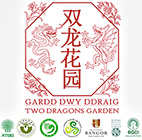Traditional Chinese Medicine use research project
As part of a collaboration between Bangor University and The Confucius Institute, an ethnobotanical research project is being conducted to look at the use of medicinal plant use by Chinese people in North Wales.
Background
Traditional Chinese Medicine (TCM) has been present in China for over 3000 years, involving practices such as acupuncture, massage, exercise using controlled movements (tai chi), breathing exercises (qi qing), diet and herbal medicines. This study will specifically look at medicinal plants that are used for health benefits.
The herbal tradition involves using the roots, fruits, bark, leaves, flowers, seeds and stems of specific botanical plants that are used as alternative remedies to ailments and health issues (Schafer, 2011). In some parts of Asia, upto 80% of the population depends on traditional medicine as their primary form of healthcare (Jiang, 2013). There are over 25,000 species of plants, many of conservation concern, are used in Chinese medicine (Schippmann et al. 2003). The ethnobotanical knowledge base associated with this plant diversity has been widely documented. However, there is little research into changes in medicinal plant knowledge, occurring when people migrate to new places. Previous research shows that migrant communities maintain some aspects of traditional pharmacopeia but also migrants may incorporate new plant species (Muniz de Medeiros et al. 2012).
Research objective
The overall aim of this study is to examine uses of Chinese medicinal plants in North Wales. The following research questions will be investigated:
· Which Chinese medicinal plant species are in contemporary use in North Wales?
· How has medicinal plant use changed with migration to the UK?
· Does knowledge of medicinal plants differ between Chinese students and local Chinese residents in North Wales?
Literature review
According to a 2010 report by the International Organisation for Migration, it is estimated that around 214 million people (3% of the human population), live in a country that is different from their origin (International Organisation for Migration. 2010).
When migrants from around the world settle into a new environment, one method of keeping traditional medicinal knowledge alive, is the cultivation of medicinal plants from their home country into their new host environment (Muniz et all., 2012). Migrants that have settled into a new environment can either consciously or subconsciously devise a way to maintain and preserve their medical systems and structures (Inta., et al, 2008). Cultivating plants into a new environment can be seen as a fundamental way to maintain traditional medicinal practices. However, other strategies that are more popular are substitution- using a plant that has similar properties/ medical effects, and the importation of herbal medicinal products (Muniz et all., 2012). In order to find out how people access medicinal plants, the following will be investigated: substitution of medicinal plants from home country to host country, importation of medicinal plants, and if migrant Chinese people in North Wales grow their own medicine.
In this study, demographic information will be collected to try and quantify if there is a relationship between age and knowledge levels of medicinal plants. Demographic information will include: age, gender, number of years living in the UK, marital status, and occupation.
Methods
A questionnaire survey and semi-structured interviews will be carried out with members of the Chinese community in North Wales.
Phase 1 Focus group: Prior to the survey, a focus group with members of the Chinese community will be carried out. This will allow the researcher to gain a better understanding of the current knowledge of medicinal plants and their usage by the Chinese community in North Wales. Results from the focus group will determine which medicinal plant species are used most commonly, alongside which medical conditions are most commonly treated. This will help to shape the statements for the participant questionnaire.
Phase 2 pilot study: To test out the plant identification exercise and questionnaire. Feedback and results from pilot study will help to refine the final survey.
Phase 3 Questionnaire survey: The questionnaire will measure knowledge of medicinal plants. It will involve a plant identification exercise and a questionnaire consisting of statements.
Phase 4 Semi structured interviews: to gain a more detailed understanding of plant knowledge and use with a select number of participants.
References
Jiang, S., Quave, C.L., (2013) A comparison of traditional food and health strategies among Taiwanese and Chinese immigrants in Atlanta, Georgia, USA, Journal of ethnobiology and ethnomedicine. 9. 61. Pp2-14
Inta, A., Shengji, P., Balslev, H., Wangpakapattanawong, P., Trisonthi, C., (2008) A comparative study on medicinal plants used in Akha’s traditional medicine in China and Thailand, cultural coherence or ecological divergence?. Journal of Ethnopharmacology. 116. pp508- 517
International Organisation for Migration, (2010) World Migration Report 2010: The future of Migration: Building Capacities for Change. Geneva, Switzerland
Muniz de Medeiros, P., Soldati, G.T., Alencar, L.N., Vandebroek, I., Pieroni, A., Hanazaki, M., & Albuquerque, U.P., (2012) The use of medicinal plants by migrant people: adaptation, maintenance, and replacement. Evidence-based complementary and alternative medicine. 2012. pp 1-11
Schafer., P. (2011) The Chinese Medicinal Herb Farm: A cultivators guide to small scale organic herb production. Chelsea green publishing, Vermont, USA.
Schippmann, U., Leaman, D. & Cunningham, A., 2003. Impact of cultivation and collection on the conservation of medicinal plants. Inter-Departmental Working Group on Biological Diversity for Food and Agriculture. Rome.
Publication date: 14 January 2015


